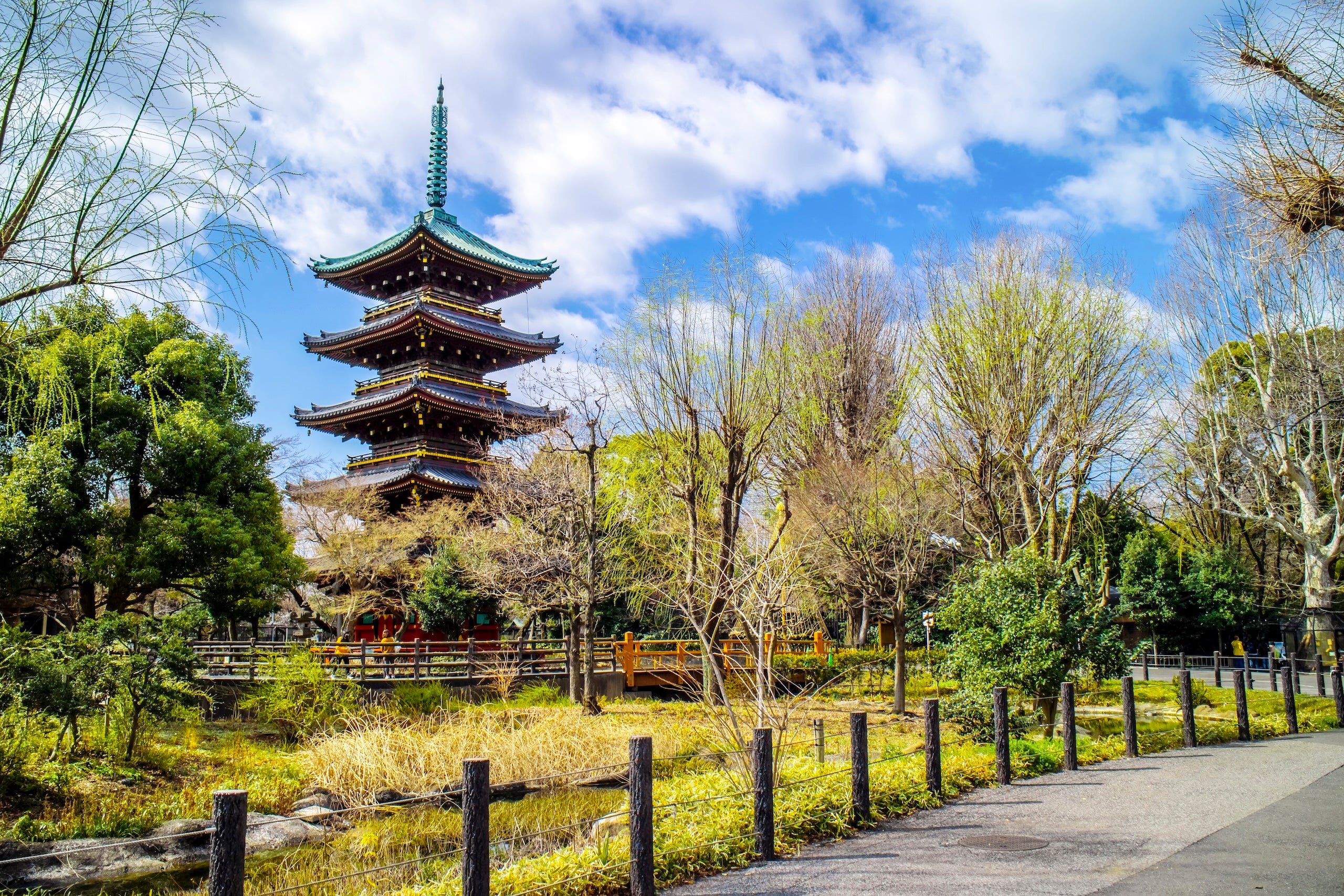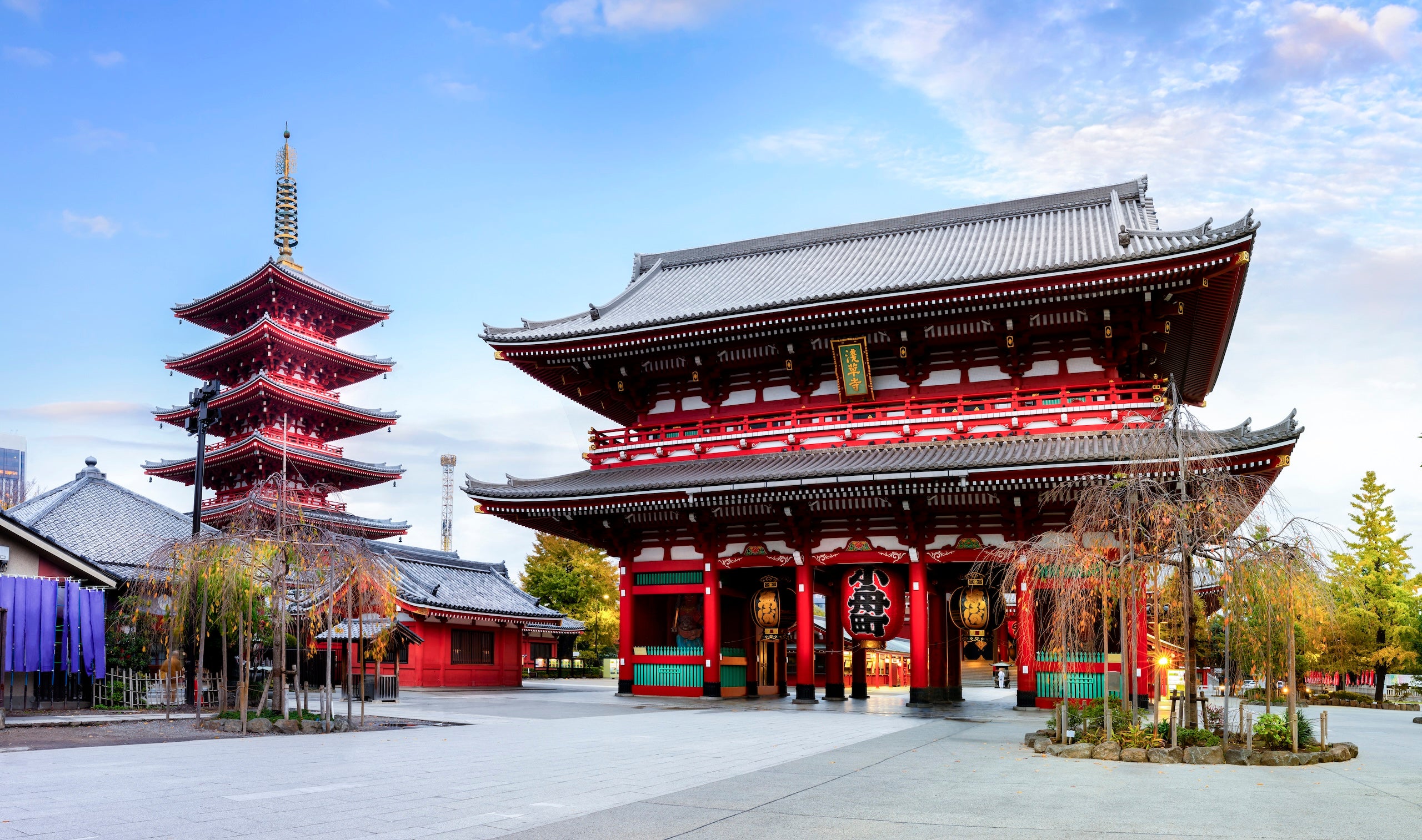




Ueno Course: Asakusa Route
- Highlights : Ueno
- Time Required : 3 hours
- Departure Time : 10:00
- Meeting Place : NOHGA HOTEL UENO TOKYO
- Dissolution Place : Asakusa Shrine
- Participants: 1-10
- Meals: Not included
- Guide Language Support: English (The tour is accompanied by a National Government Licensed Guide Interpreter.)
The present-day Ueno Park was once the grounds of Kan'ei-ji Temple, and after the Great Meireki Fire (1657), the shogunate gathered many temples and shrines in the area, leading to the development of the "Butsudan Street" (Buddhist altar street), where numerous craftsmen settled. Nearby, Kappabashi Kitchen Town, a thriving wholesale district for kitchen tools and tableware, also emerged in the Taisho era.
Our tour starts in Ueno and continues to Asakusa, exploring the history and vibrancy of the temple town and craftsmen’s district, reflecting on the faith and daily life of Edo-period residents as we visit the area between Sumida River and Senso-ji Temple.
Choose options





Old Meets New

Before

After
“Illustration of Ueno” published around the Tenwa and Jōkyō eras / “Ueno Country” from Edo Sagashi, including the Great Buddha and Seiyōken Pavilion
*Collection of the Hosei University Research Center for Edo-Tokyo Studies.

Highlights 1
Ueno Toshogu Shrine
Ueno Tosho-gu Shrine is a magnificent shrine dedicated to Tokugawa Ieyasu, the founder of the Tokugawa shogunate. Built in the early Edo period, this shrine is renowned for its intricate carvings and traditional architecture, offering a glimpse into Japan’s rich history and cultural heritage.

Highlights 2
Kappabashi Kitchenware Street
The Old Yoshidaya Sake Shop in Ueno is a historic store that dates back to the Edo period, providing a rare opportunity to experience Tokyo's commercial culture. Visitors can immerse themselves in the traditional architecture and the atmosphere of the time, gaining a deeper connection to Japan's history.

Highlights 3
Kaminarimon (Thunder Gate)
Kaminarimon, with its iconic giant red lantern, has long been a symbol of Asakusa and continues to captivate visitors from around the world. Originally built in the Heian period, Kaminarimon has been reconstructed multiple times, yet remains a powerful symbol of Tokyo’s faith and culture. Passing through the gate, you are welcomed by the path leading to Senso-ji Temple, where the history and tradition of the area come alive.

Highlights 4
Sensō-ji Temple
Sensoji Temple, founded in 628, is the oldest temple in Tokyo and a central attraction in Asakusa. It features iconic structures such as the Thunder Gate and the Five-Story Pagoda, drawing countless visitors and worshippers. The bustling Nakamise Street offers traditional souvenirs and snacks, providing a glimpse into Japan’s cultural heritage dating back to the Edo period. Experience the rich historical legacy while enjoying the atmosphere of old Japan.
Course
Ueno Course
Dress Code:
Please wear comfortable, easy-to-move clothing and shoes suitable for walking, such as sneakers.
Children & Infants:
Children aged 0-6 can join for free (under 6's go FREE). Note: There is no child pricing.
Participation Requirements (Restrictions):
Guests who are feeling unwell, those using wheelchairs or strollers, pregnant guests, and those with heart conditions or other serious health issues are not permitted to participate. Please note that if, during the tour, it is determined that a participant cannot complete the designated itinerary as instructed by the guide, they may be asked to leave the group. In such cases, no refund will be provided.
Cancellation Fee Regulations:
Cancellation deadline : 24 hours before departure time (Japan Standard Time - JST)
If you don’t show up or you cancel the tour within 24 hours before the departure time, we will not refund you.
Additional Notes:
If you are not present at the meeting location within 5 minutes of the designated tour start time, the tour will proceed without you. In such cases, there will be no re-pickup by the guide, and no refund will be issued for the tour fee. Please note that the tour will proceed even in rainy weather..
Need help?
Frequently Asked Questions
Booking
You can book a tour until 4:00 PM (JST) the day before the tour begins.
After 4:00 PM the day before, reservations will no longer be accepted through the website.
Cancellation fees will apply from 24 hours before the tour departure time.
All tours are conducted in English only.
To respect other participants, the tour will depart 5 minutes after the scheduled start time. In this case, no refunds will be provided.
Children aged 0-6 can join for free. However, we kindly ask that infants in strollers are not brought along. If it is deemed that a child cannot complete the route set by the guide, we may request that you leave the group. Please note that no refunds will be provided in this case.
Tours will proceed in rainy weather, so please bring an umbrella or raincoat.
However, in the case of extreme weather conditions, we may decide to cancel the tour in advance. In such cases, we will notify all booked participants via email.
We do not accept walk-ins or same-day participants without a prior reservation.
Please cancel your existing reservation and make a new one. Note that a 100% cancellation fee will apply if you cancel within 24 hours before departure time due to guide arrangements.
Tours are available on a first-come, first-served basis.
Tokyo Time Travel does not provide personal travel insurance for tour participants; you are required to purchase your own.